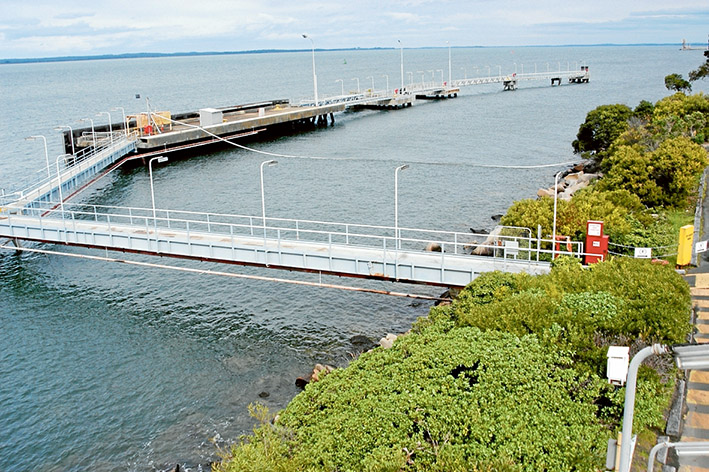
A PILOT project to produce hydrogen from brown coal will require the gas to be liquefied near Hastings before being shipped to Japan.
Kawasaki Heavy Industries says it will release more details of the project “in the first quarter of 2017 for consideration and consultation”.
The company says it has been “exploring the opportunity” to create a hydrogen energy supply chain from Australia to Japan for more than six years.
During that time discussions had been held with state and federal governments, industry and research organisations.
“The initiative is well known,” general manager of Kawasaki’s hydrogen development centre, Dr Eiichi Harada, said in a statement issued by consultants, GHD Australia.
Mr Harada said Kawasaki “is not and has never been involved in plans to process coal at Western Port”.
Flinders MP Greg Hunt, who was environment minister during the time that Kawasaki was in high level government discussions about its brown coal to liquid hydrogen project, last week repeated that he was opposed to any “reindustrialisation” of Crib Point but would not rule out a coal gasification plant at Hastings.
Mr Hunt said he was “utterly opposed” to Western Port being used as a coal port, adding “I have made it clear that Crib Point should not be reindustrialised for hydrogen or bitumen”.
However, the proposal would involve hydrogen, not coal, being exported from Hastings.
Mr Hunt said he knew of discussions between the state and Kawasaki but “as far as I am aware, at this stage no decisions have been made as to the port they will use”.
“Any proposal would need the approval of the state government and I would urge them not to approve any industrial use at Crib Point,” he said.
Acting Resources Minister Philip Dalidakis said the state government “has been working with Kawasaki Heavy Industries and the Commonwealth on an engineering study to investigate the possible production of hydrogen from brown coal”.
“This project is in the very early stages and we are keen to explore all serious investments that have the potential to create much needed jobs in the Latrobe Valley.”
Unemployment in the valley is about to rise with the close of the Hazelwood power plant.
Hastings MP Neale Burgess last week said Kawasaki Heavy Industries has signed a “secret deal” with the state government that could lead to “long coal trains or a coal slurry pipe bringing huge amounts of coal to Hastings, building of a huge coal gasification plant at Hastings and the produced hydrogen being shipped through Western Port”.
Mr Burgess’s opposition to the plant being located at Hastings or anywhere in Western Port contrasts with that of his federal Liberal colleague, Mr Hunt.
Mr Burgess said the Coalition “supports the exploration of uses for our valuable brown coal deposits and although there is a lot of work to be done to make it viable, its conversion to hydrogen is one of those potential uses”.
“However, the Coalition was clear while in government and has confirmed in opposition, that Western Port is the location of Victoria’s second container port and that it would not be used for any of the toxic purposes the Labor Party had previously earmarked it for, including coal, urea and bitumen.
“Western Port is not the appropriate place to ship coal to, whether via long coal trains, slurry pipe or any other means, or to develop a huge gasification plant for turning that coal into hydrogen.”
It is understood Kawasaki is already building a ship to transport liquid hydrogen which would initially be produced at a pilot plant in the Latrobe Valley.
If proved viable, a much larger plant would be built at Hastings.
Environmentalists argue that the process adds to Australia’s carbon emissions while Japan gets the benefit of a much cleaner fuel.
Many of Mr Burgess’s concerns are echoed by Jenny Warfe, of the Blue Wedges environmental action group.
“A pilot project is expected to start in 2020. Under the plan hydrogen will be produced from brown coal from the Latrobe Valley, so it’s odds on that Hastings would be the unlucky recipient of this project,” Ms Warfe said.
“Although representatives from the Australian Maritime Safety Authority and Japan’s transport ministry signed an agreement in Canberra, the public has been kept well in the dark about the ‘initiative’. As far as I can ascertain, there has been no public consultation about Hastings and Western Port being the unlucky recipient of an industry – or at the very least the likely shipping hub – for a fuel responsible for some of the most horrendous incidents on the planet and loss of human life. Are we mad?”
Ms Warfe described brown coal as “the dirtiest coal on the planet”.
“Our local community will bear the brunt of the climate and human health damaging emissions, while Japan enjoys the clean hydrogen fuel.
“Although the pilot project is said to have the production plant in the Latrobe Valley, hydrogen would be trucked to Western Port, and this would mean hundreds of extra trucks a day … on roads that are already groaning under the pressures of rampant population growth.
“Many of my colleagues are deeply concerned about this issue and I have no doubt that, were the public appraised of the proposal, there would be massive opposition.”
The state government – while awaiting recommendations from Infrastructure Victoria on where Victoria’s next container port should be located – has previously stated the Port of Hastings should increasingly be used as a “bulk port”.
Previous Labor government’s promoted Western Port as the preferred site for a container port, but the Andrews government indicated its favoured option as being at the so-called Bay West, in Port Phillip north of Geelong.



